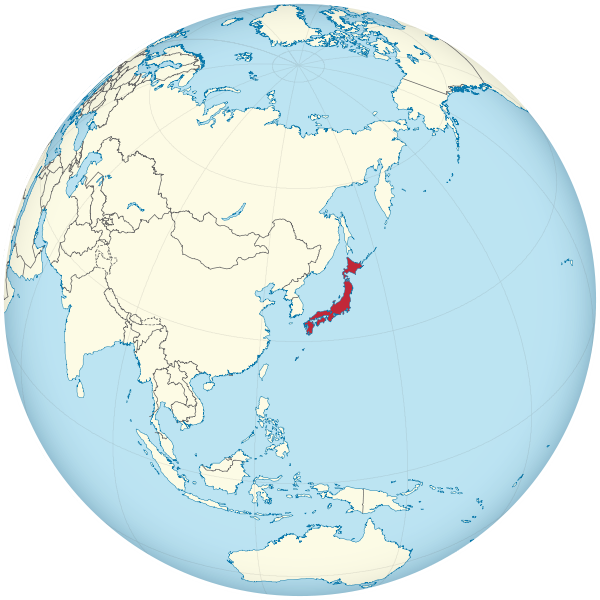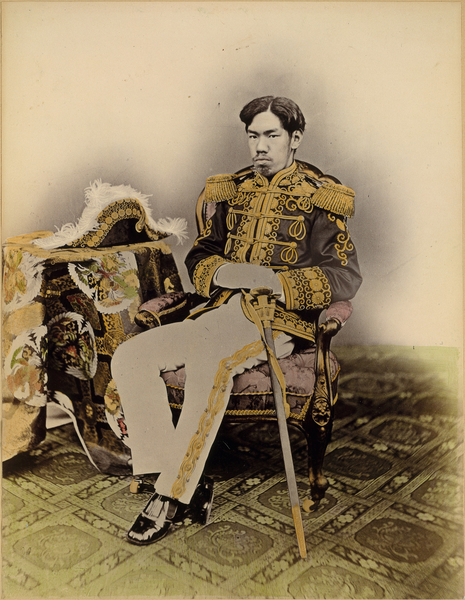

Japan is a group of islands located on the Asian Continent. The 4 most significant small islands are Honshu, Kyushu, Shikoku, and Hokkaido. The southernmost part of Japan is the Okinawan chain. Around 50 per cent of its area is covered with mountains. It lies in one of the most active, earthquake-prone areas. These are the few geographical hurdles that come in the way of architects.

TUBS, CC BY-SA 3.0
The majority of the people living in Japan are Japanese but there is also a small number of Ainu and Koreans who were brought as labour when Korea was a colony of Japan. Their staple food is rice and fish is the only or major source of protein in their diet.
China was ruling Eastern Asia till the beginning of the 19th century whereas it started declining with time due to its internal issues and Japan started emerging as a strong economic power.
Japan was an industrialized economy but it was isolated for 100s of years. 1853 was the time when Japan decided to end this years-long isolation.
This was made possible only when Commodore Matthew Perry was sent by the USA. Commodore Matthew Perry requested Japan to open its ports for trade.
Commodore Matthew Perry wanted to persuade Japan to trade with the USA merchant ships. This was mainly because china was a major priority for the USA as china was a major market and japan was on the way to China.
Another main reason for this trade policy was that Japan would work as a place to refuel their whaling ships.
This trade policy brought important changes in the politics of Japan. The king who was ruling Japan had minimal power but with the coming of this trade policy then he again came up as a powerful figure.
Circumstances changed in the year 1868. A movement was started that violently removed the shogun from his position.
With this, the capital city was also shifted to Edo and was named Tokyo. Tokyo means ‘eastern capital’.
This was the time when European countries were setting up their colonial empires over the Southern world.
Soon the news of China being defeated by the British. Now Japan was afraid that soon it would also be undertaken by the British.
Many intelligent people started to think about what they can learn from Europeans and were also trying to get new ideas to deal with this problem.
They also thought that Japan should avoid doing trade with Europe but will continue to adopt new technologies that emerged from Europeans.
They introduced new policies with the slogan ‘fukoku kyohei’ which means rich country, strong army.
This was introduced to boost their economy and make their army stronger. The main idea behind doing this was to deal with Europeans.
For the same purpose, they also tried to build a sense of nationalism in the people of Japan. So that they can love their country and fight against the British.
They were also building the emperor system and researching the European monarchies.
The Emperor was treated with utter respect as it was believed that the emperor is the descendent of the Sun Goddess. He was also considered the one who led westernization.
They also passed laws focusing on education in 1890 and requested people to learn, advance the public good, and spread the idea of common interests.
It was made compulsory to attend school for all children in the year 1910. They had to pay a very small amount as tuition fees.
This idea was inspired by the Western model but it included loyalty and Japan's history. The government had full control over the education system.
Many steps were taken by the government to unify the nation such as censorhip, and serving young people in the army. All these actions faced strong opposition. But there were still parts that were under the direct control of the emperor.
The army used different ways to acquire more territory. Due to this, a war started between China and Russia. But the actual winner of the war was Japan.
There were a set of people who were speaking against the government’s aggressive policies and demanding democracy.
Japan became stronger economically but its own people went against the government and collaborated with the people of its colonies.
Approximately all the above reforms were taken under the Meiji reforms. One most important part of the Meiji reforms was the modernization of the Japanese economy.

Emperor Meiji
Uchida Kuichi (内田九一) (1844–1875), Public domain, via Wikimedia Commons
The main source of government revenue was the taxes that were levied on the agriculture sector.
Under the modernization strategy, the first railway line in Japan was spread out from Tokyo to the port of Yokohama during 1870-72.
Government imported textiles from Europe and also hired foreign trainers to train the workers and teach in the educational institutes and many students were sent to the foreign for the same purpose.
After 1872 new banking institutions were introduced. Many private companies started building ships for the purpose of trade.
Japan was an industrialized economy but it was isolated for 100s of years. 1853 was the time when Japan decided to end this years-long isolation at the request of Commodore Matthew Perry who was sent by the USA. He requested Japan to open its ports for trade. A movement was started that violently removed the shogun from his position in the year 1868. Many reforms were made under the Meiji reforms. One most important parts of the Meiji reforms was the modernization of the Japanese economy
Q1. When did Japan again gain its position as a major economic power? What was their new path related to and how did it help japan?
Japan again gained its position as a major economic power by the 1970s. This time its path was more capitalist than socialist. This helped Japan to be a part of the world that is dominated by the colonies of the west.
Q2. What was the purpose of adopting this new path?
This expansion can be well explained as their focus was to hold out against Western domination and liberalize Asia. This instant development was underlined by the strong institution of Japan, and their loyalty towards their nation.
Q3.Who ruled Eastern Asia during the early 19th century? and what was the position of Japan?
China was ruling Eastern Asia till the beginning of the 19th century whereas Japan was just a small country that was isolated from the rest of the world.
Q4. How did Japan emerge at that time when China was losing its powerful position in Eastern Asia?
This was the time when Japan came up with a modern nation-state with an industrial economy and even established a colonial empire by including Taiwan in 1895 and Korea in 1910